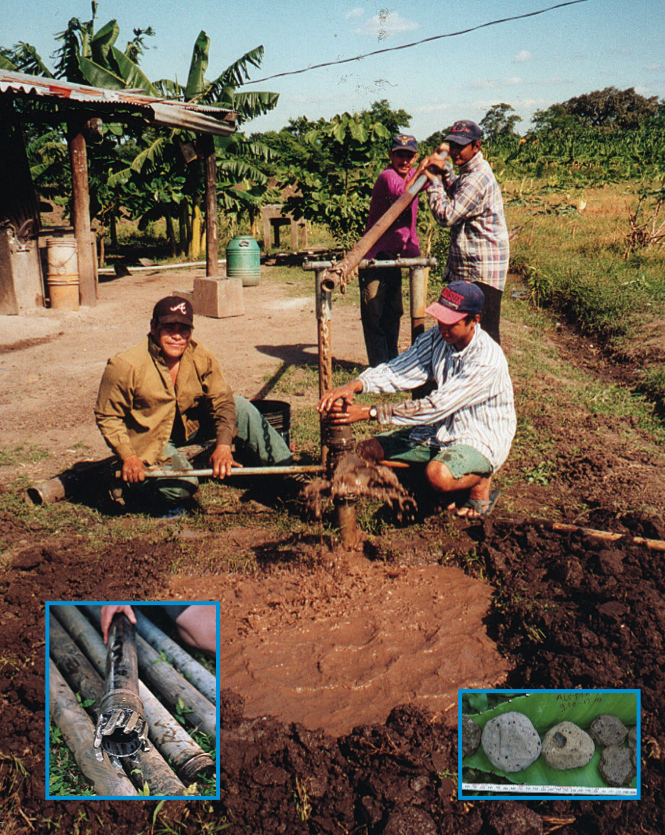Sludging - Rota sludge
| |
The Rota-sludge method is an adaptation of the Indian hand sludge method. The hardened drill bit is turned 90 degrees during drilling thus chiselling the bottom of the hole. This technology can be used to drill 2-5 inch wells in layers with sand, clay, gravel, tuff stone or weathered rock.
| Advantages | Disadvantages |
|---|---|
| Drill in hard soil.
|
|
| Advantages | Disadvantages/limitations |
|---|---|
| - Can drill in hard soil |
Capacity
2-5 inch wells to 20 meter.
Costs of wells
US$ 30 India. US$ 80-400 Nicaragua.
Applying conditions
Cost of introduction: Variable US$ 5,000-20,000 per project, including hand-on training, drill set and drilling of test wells.

|
Rota Sludge Manual
PRACTICA foundation and ETC Energy have put together a manual on the Rota Sludge & Stone Hammer drilling: Volume I Drilling Manual, Volume II Production Manual High quality manuals for roata-sludge drilling, well digging and other manual drilling and digging methods are available as well with Foundation Connect International (http://www.connectinternational.nl/english/smartmodules/smart-tec/wells-boreholes/handdrilling). They are for free for organizations that are a Connect International member (cost: 50 Euro; see: http://www.connectinternational.nl/files/membership.pdf).
Movie
External links
- www.practicafoundation.nl
- General info on well drilling www.rwsn.org
- nl.youtube.com/watch?v=MvebFHCjCvk
- Organisation http://www.waterforallinternational www.waterforallinternational ]

